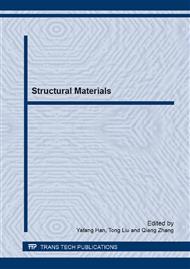p.289
p.298
p.304
p.311
p.317
p.323
p.329
p.334
p.340
Microstructures of Infiltrated Layer and Friction Properties of Low-Carbon Cr-Ni-Mo Bearing Steel during Duplex Surface Finishing Process
Abstract:
The carburizing behavior of low-carbon Cr-Ni-Mo, the nitriding behavior of C-Cr-W bearing steel and the carburizing process prior to nitriding of low-carbon Cr-Ni-Mo bearing steel were mainly investigated in this paper through the contrastive analysis of microstructures and properties by employing scanning electron microscope (SEM), transmission electron microscope (TEM) and X-Ray Diffraction XRD, etc. The result indicated that compared to the simple carburizing and nitriding process, the material that experienced the duplex surface finishing process could obtain a good infiltrated layer’s microstructure and excellent mechanical properties. The thickness of infiltrated layer was 1.8mm. The hardness of surface could reach 1100HV, and the infiltrated layer had a reasonable hardness gradient distribution. Meanwhile the test materials through duplex surface finishing process exhibited good friction properties in the aspect of point contact in dry friction.
Info:
Periodical:
Pages:
317-322
Citation:
Online since:
April 2014
Authors:
Price:
Сopyright:
© 2014 Trans Tech Publications Ltd. All Rights Reserved
Share:
Citation:


